If you’ve ever wondered “what is dashi” and how to make it, look no further! In this ultimate guide, I’ll explain the different types of Japanese soup stock, ingredients used, and ways to cook with these umami-rich stocks in Japanese dishes.
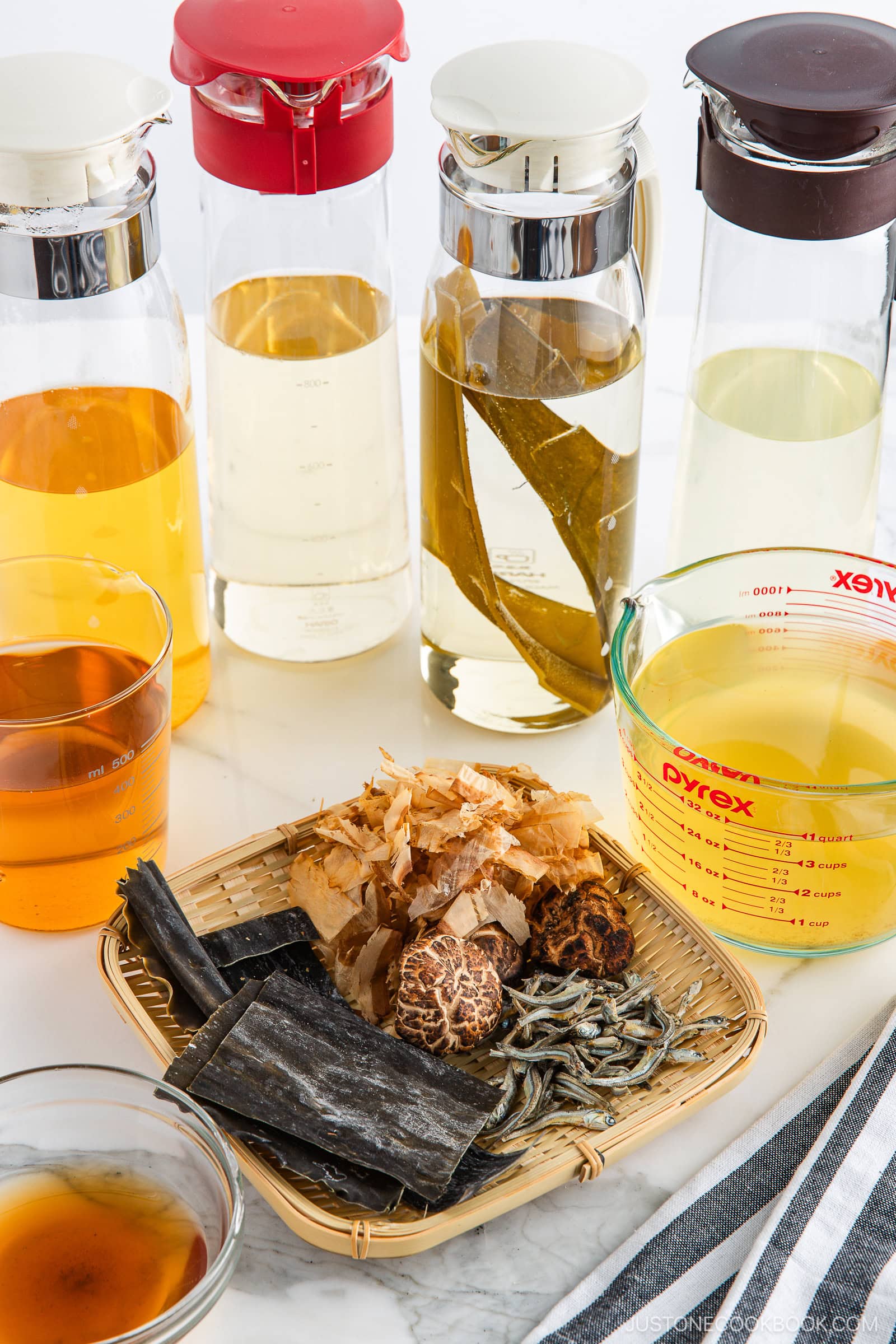
Dashi is a foundational ingredient in Japanese cuisine. In my guide What is Dashi and How to Make It, I’ll explain the several types of Japanese soup stock and how to make it from scratch. Then, start making easy Japanese recipes like Homemade Miso Soup and Udon Noodle Soup!
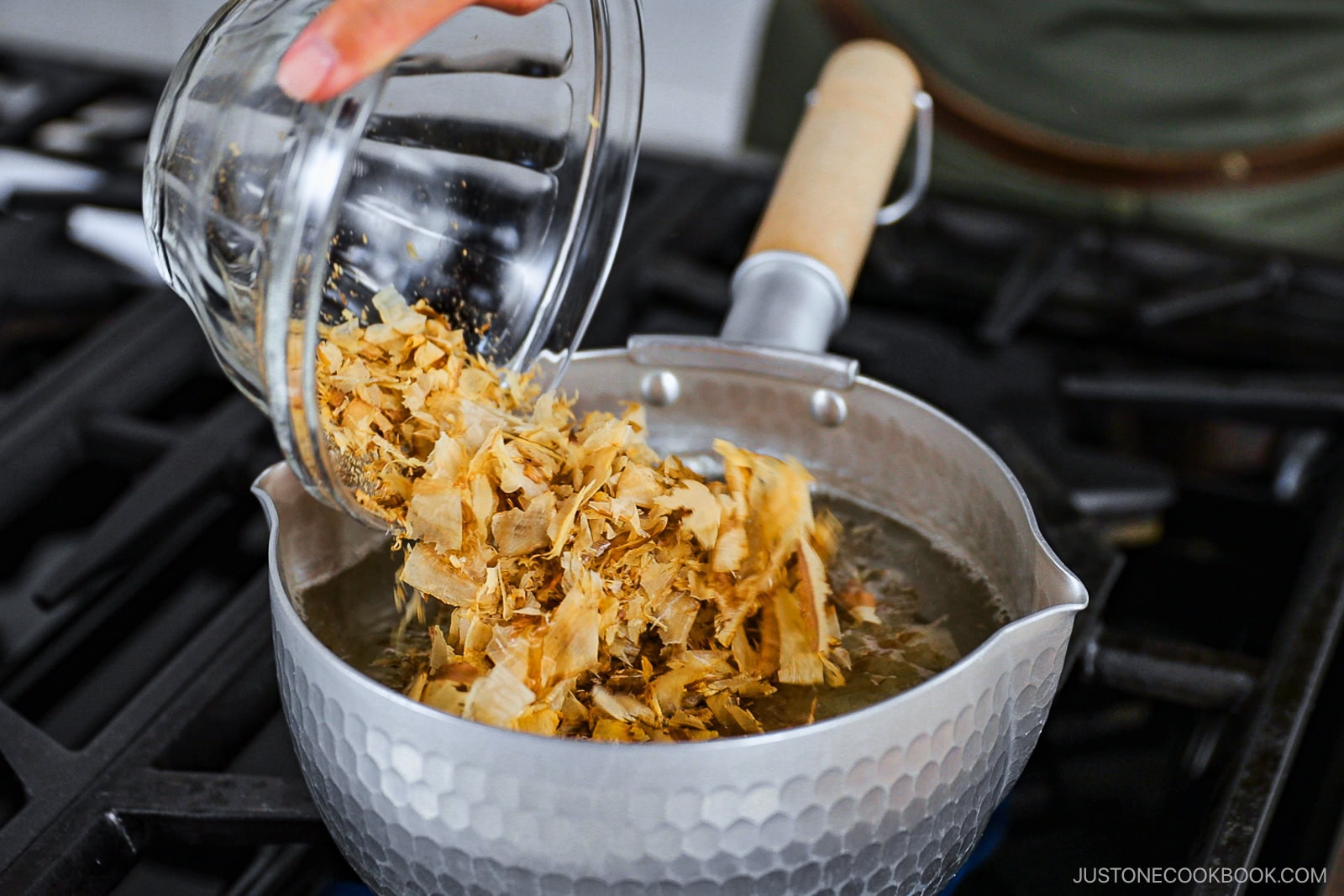
What is Dashi?
Dashi (だし, 出汁) or dashijiru (出し汁) is Japanese soup stock made from one or more ingredients like dried kelp, dried bonito flakes, dried shiitake mushrooms, and/or dried anchovies. They are naturally rich in glutamates that deliver intense flavor and give Japanese food its rich and deep umami taste. Its use in daily Japanese cooking traces back to 17th-century Japan.
How to Use Japanese Soup Stock
- In soups like miso soup for an authentic umami flavor.
- As a broth base for Japanese hot pots, stews, simmered dishes, and noodle soup dishes.
- As seasoning for rolled omelette, mixed rice, or grilled octopus balls.
- In sauces for a touch of clear liquid that adds a savory depth and subtle aroma.
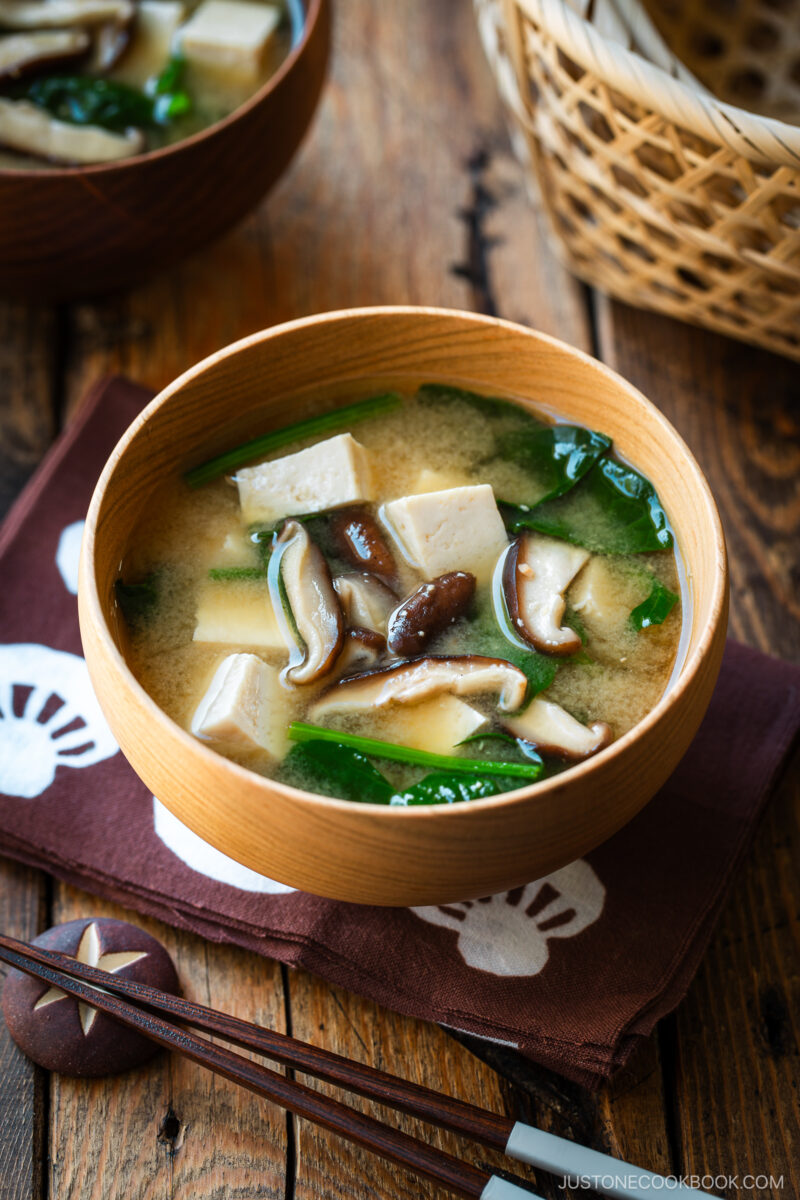
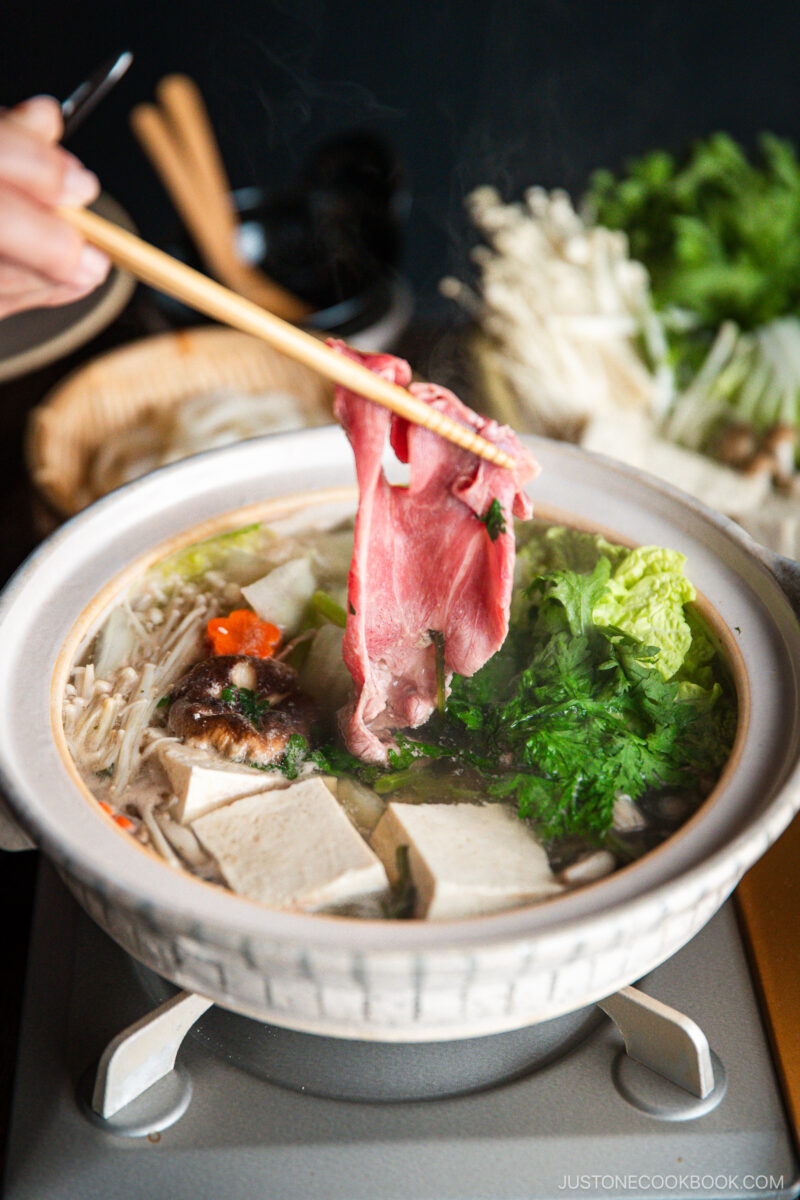
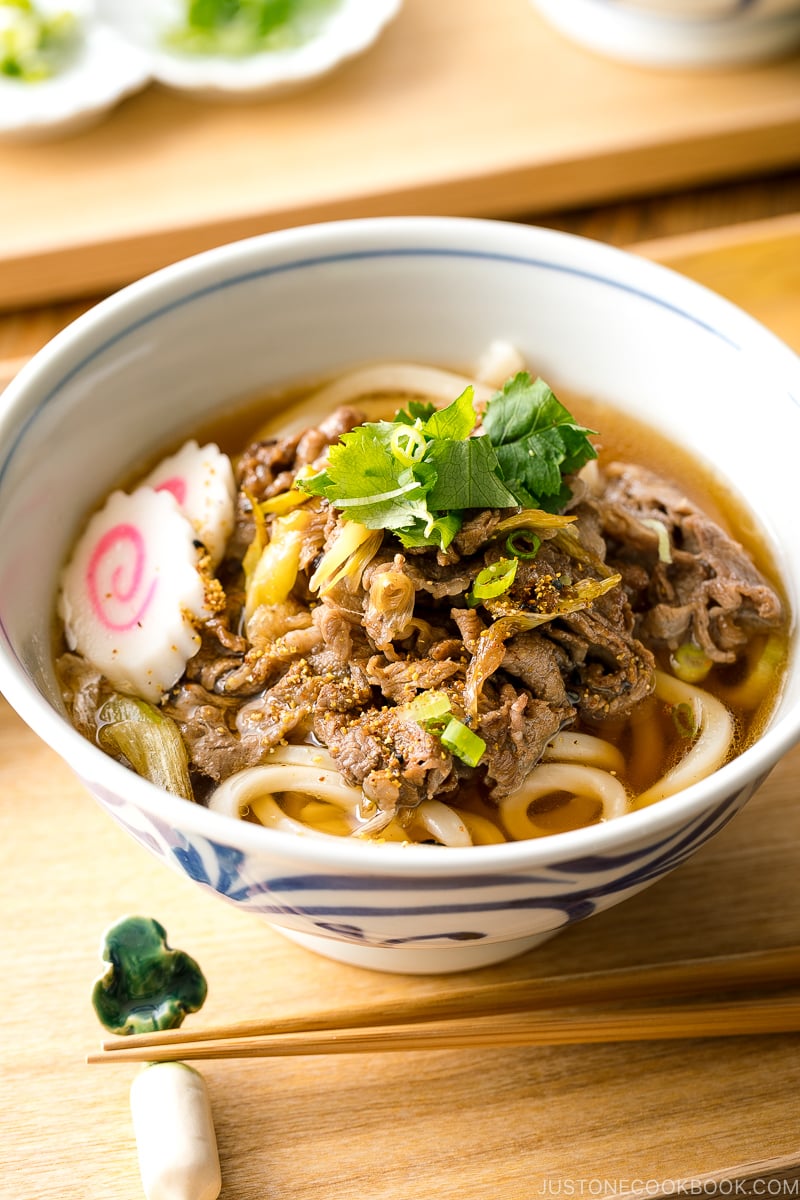
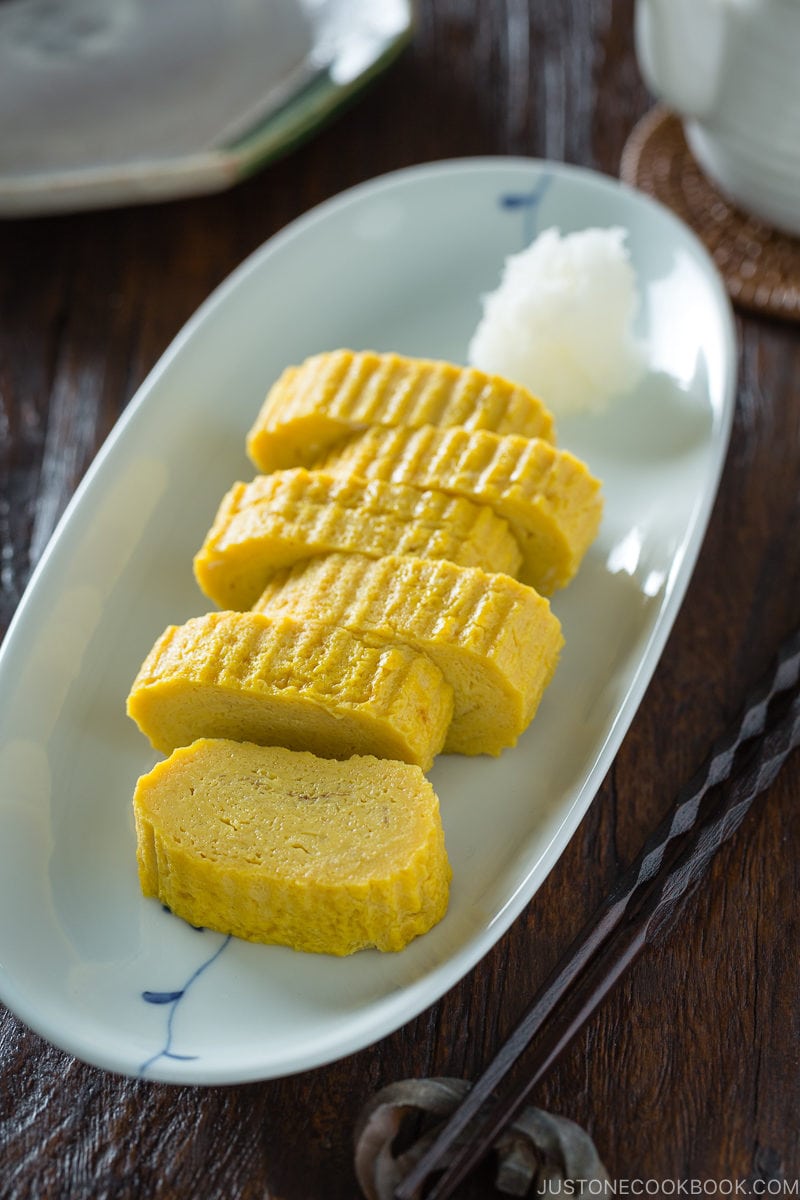
Ingredients for Dashi
- Kombu – dried kelp* (a kind of seaweed)
- Katsuobushi – dried and fermented skipjack tuna/bonito shaved into thin flakes
- Iriko or niboshi – dried anchovies/sardines
- Shiitake – dried shiitake mushrooms*
*vegan and vegetarian
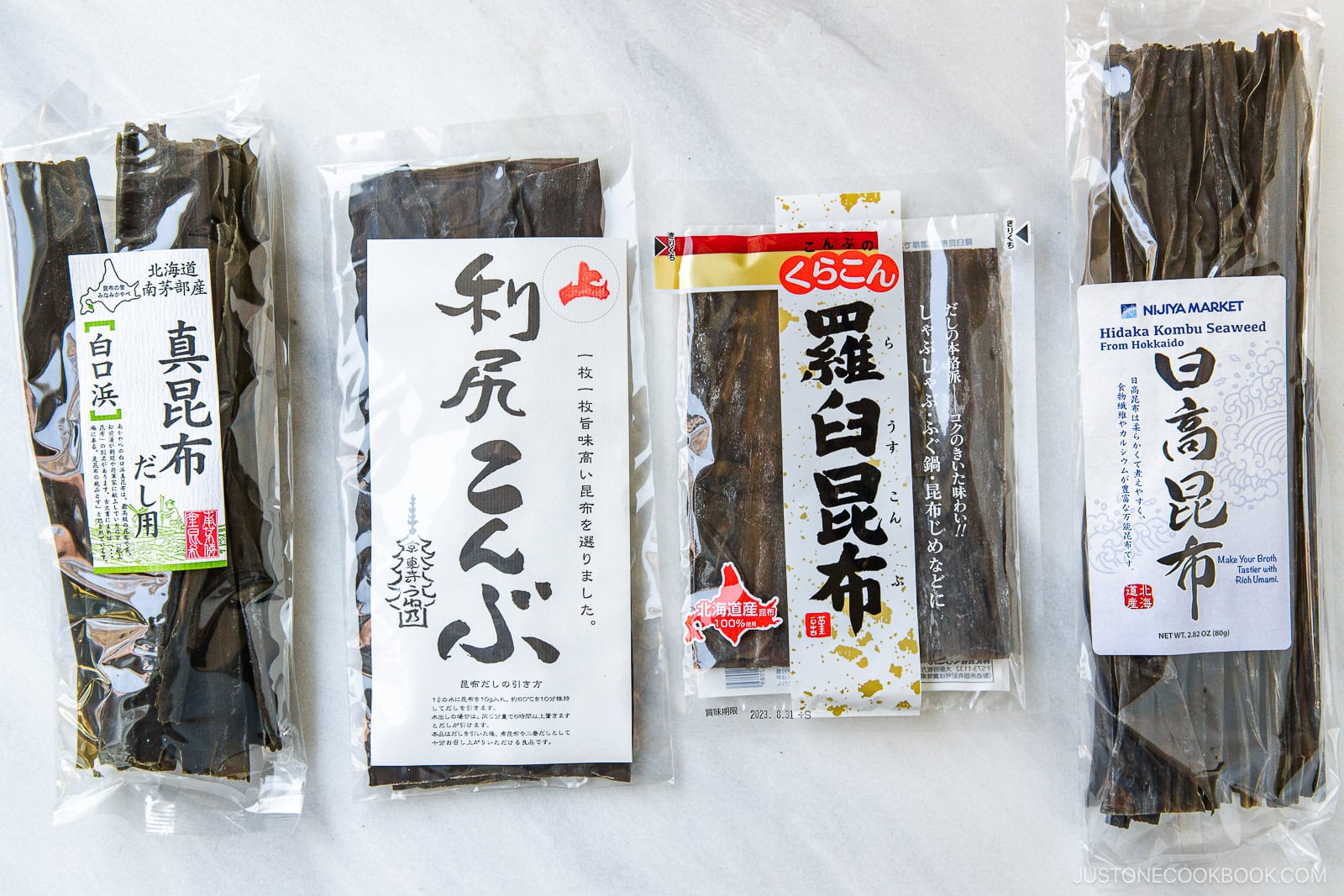
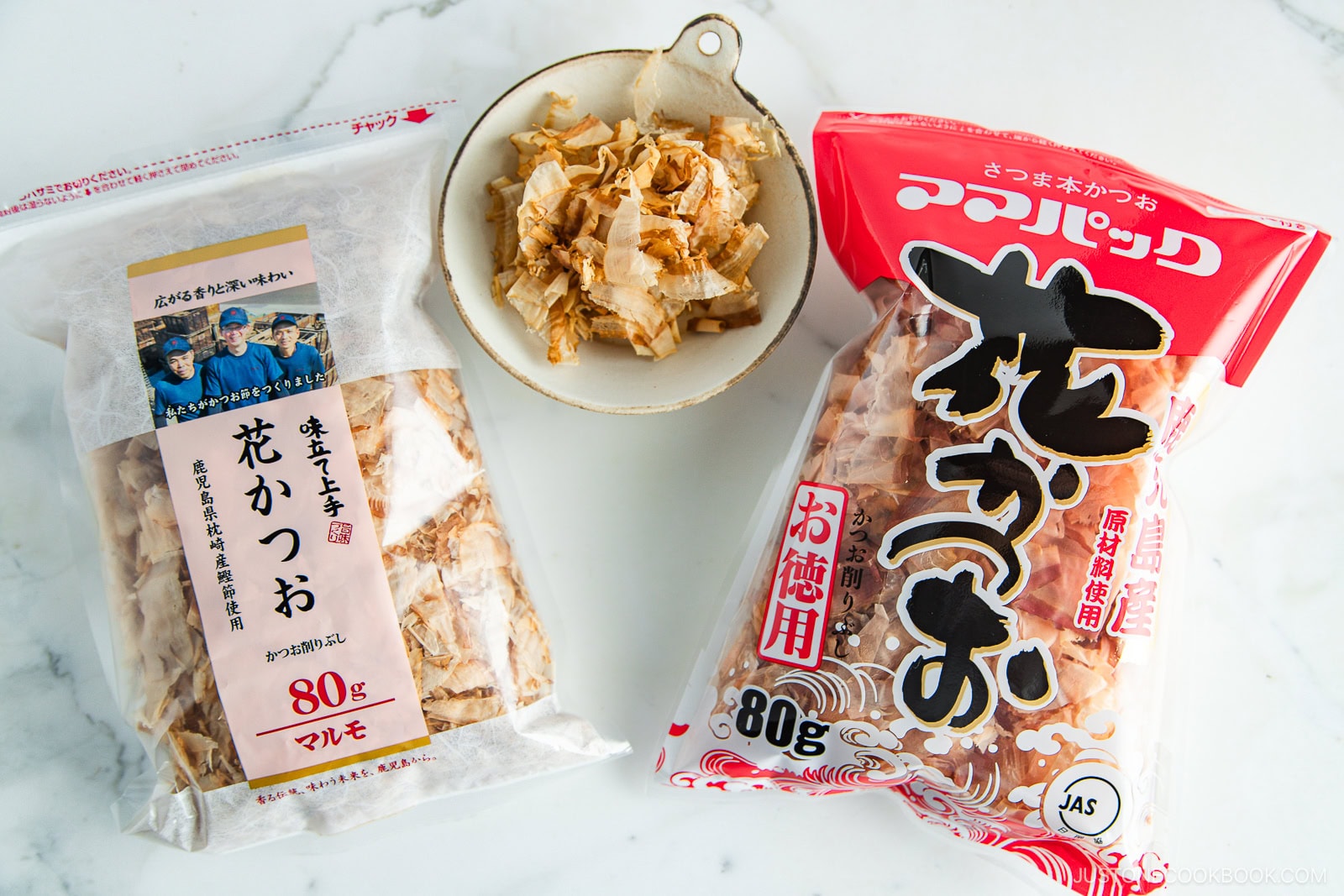


Six Different Types of Dashi
How do we decide which type to use for a particular dish? While pairings are often based on customary practice, there is no hard-and-fast rule.
1. Awase Dashi (合わせだし)
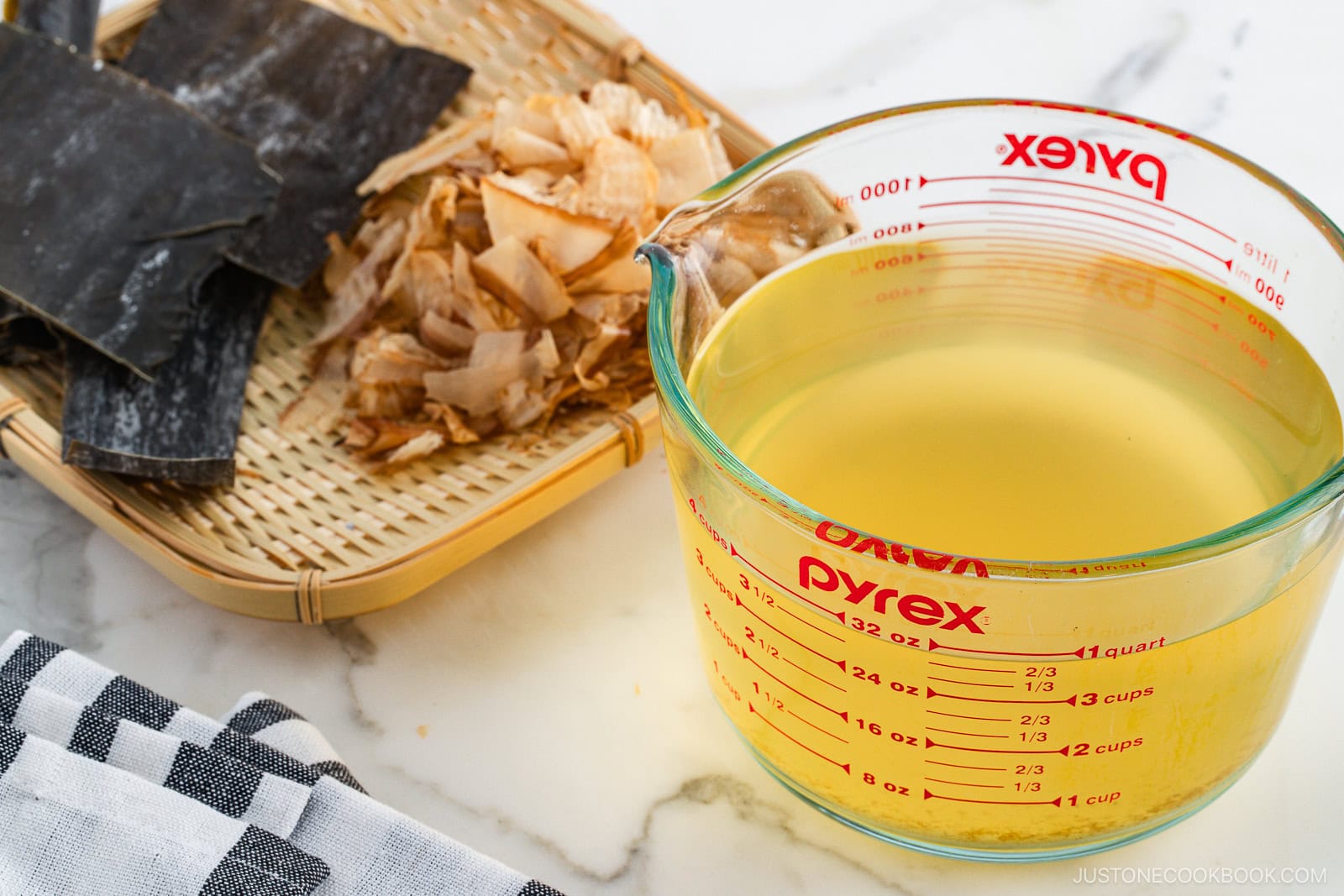
- uses dried kelp and bonito flakes
- means “combination” or “mixed”
- classic all-purpose stock; most commonly used
- my go-to soup stock for my recipes
Use it in:
- Homemade Miso Soup
- Donburi (rice bowls): Oyakodon
- Simmered dishes: Nikujaga, Chikuzenni
- Tamagoyaki
2. Kombu Dashi (昆布だし)
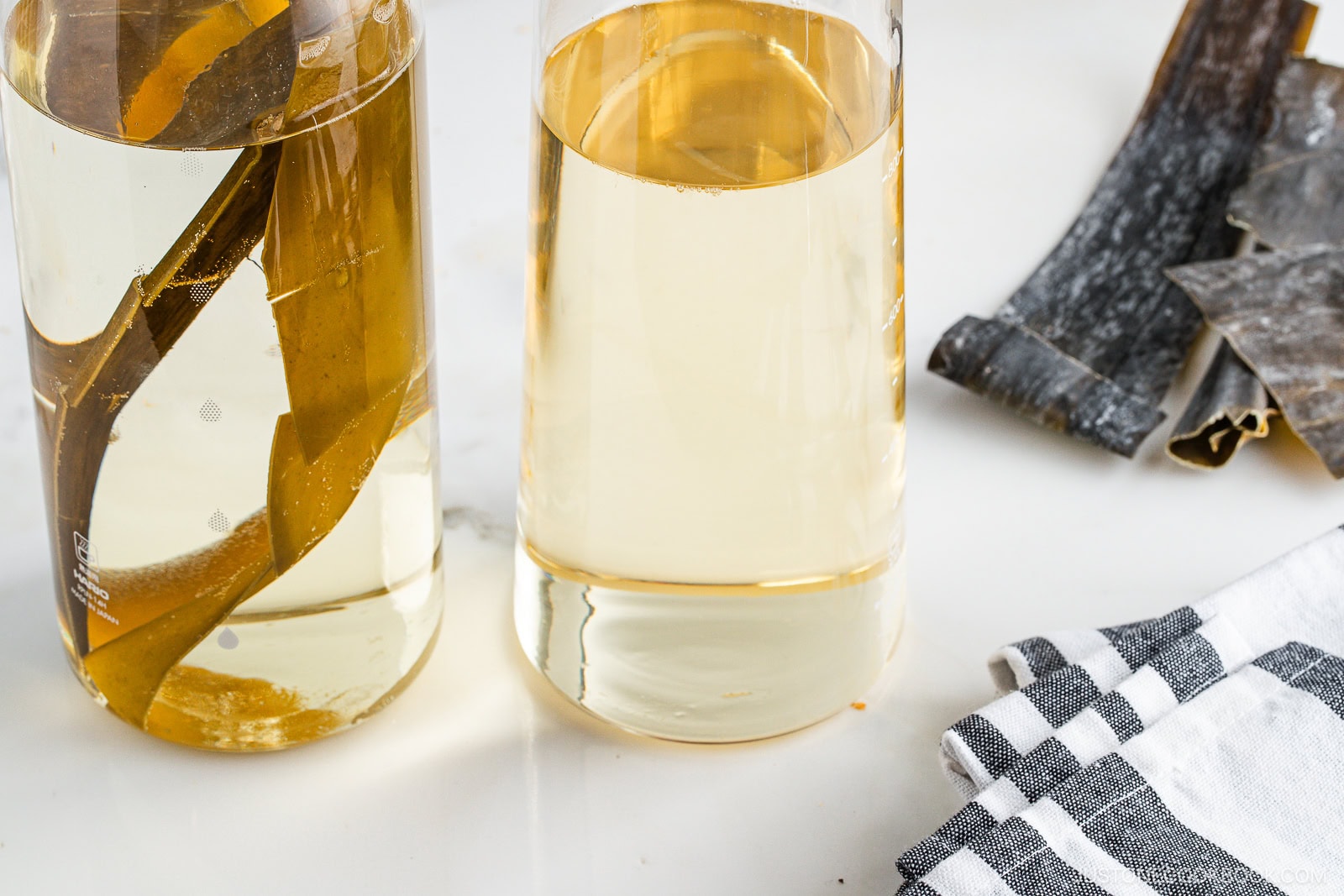
- uses dried kelp
- vegetarian/vegan
- gentle flavor
- for fish, seafood, or ingredients with a subtle taste
- the easiest stock to make
Use it in:
- Japanese Clear Clam Soup
- Hot Tofu (Yudofu)
- Shabu Shabu
3. Katsuo Dashi (鰹だし)
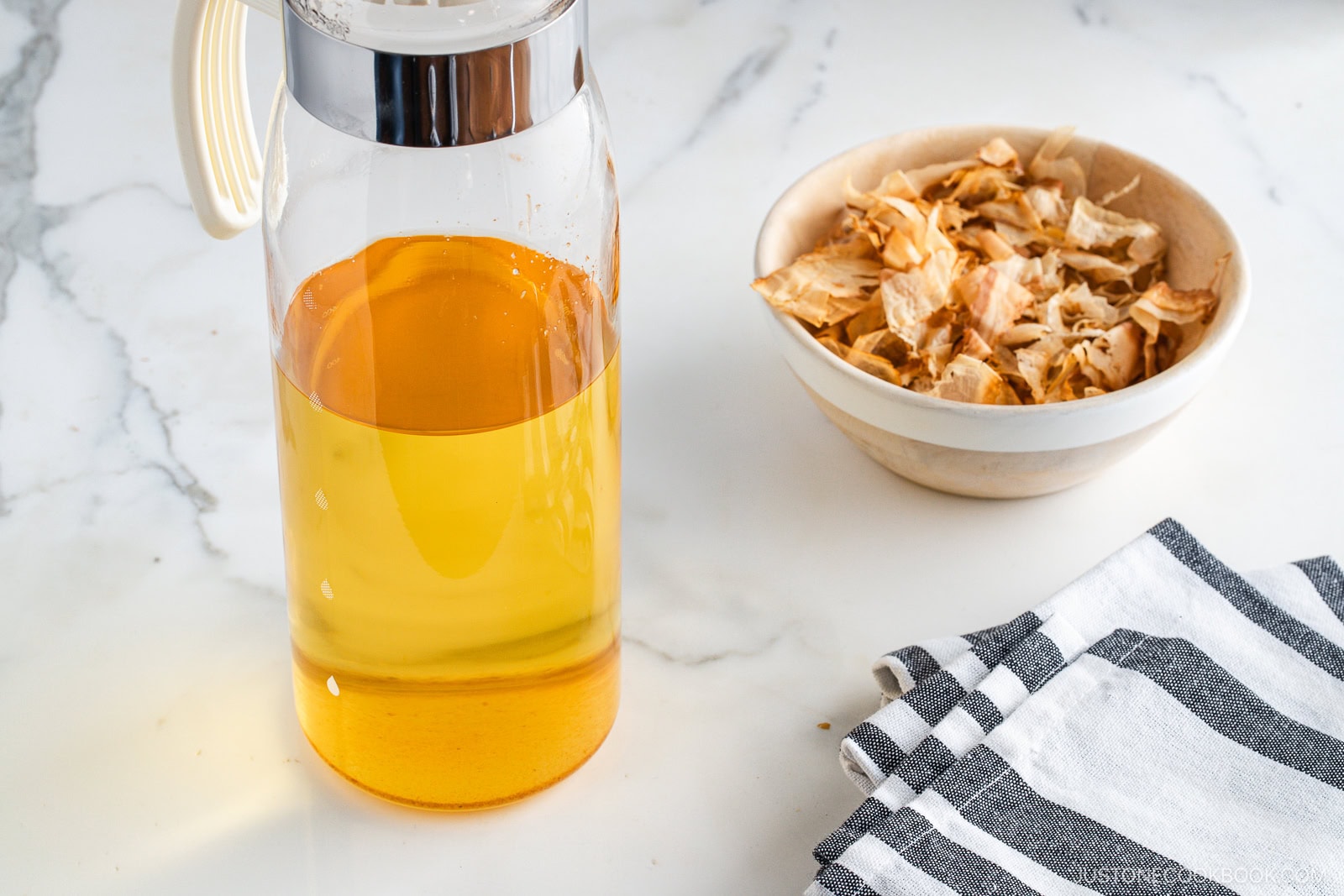
- uses dried bonito flakes
- aromatic, flavorful, and elegant
- good for simmered dishes, noodle soup dishes, and vegetables
- not recommended for fish dishes
Use it in:
4. Iriko Dashi (いりこだし)
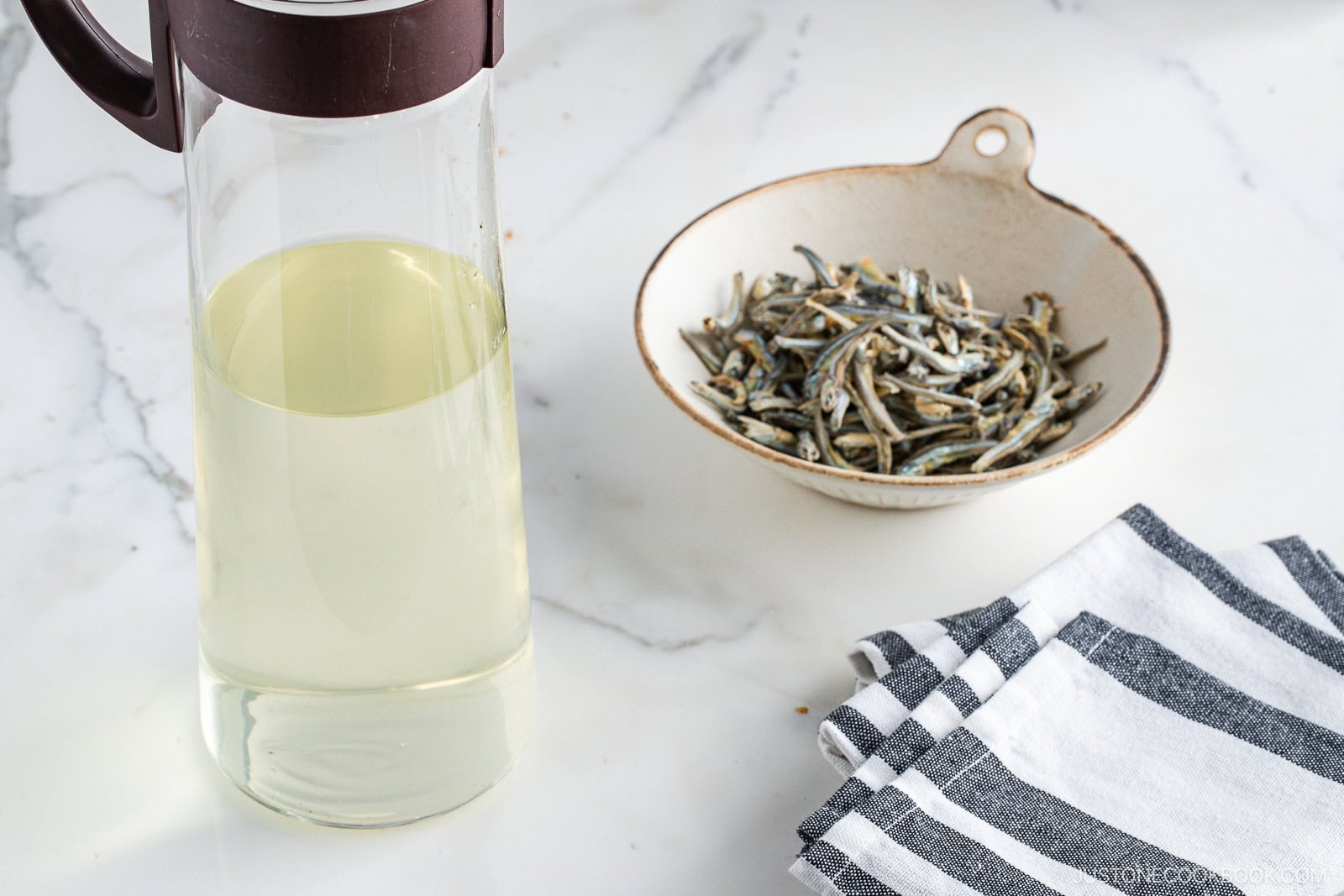
- uses dried baby anchovies/sardines; most affordable ingredient
- strong, fishy aroma and taste
- a savory stock that complements flavors or seasoning like soy sauce
- not recommended for fish dishes as the taste may be too strong
Use it in:
- Homemade Miso Soup
- Noodle soup: Curry Udon and Kitsune Udon
- Mentsuyu
- Donburi (rice bowls)
- Simmered dishes: Japanese Simmered Kabocha
5. Shiitake Dashi (干し椎茸の戻し汁; 椎茸だし)
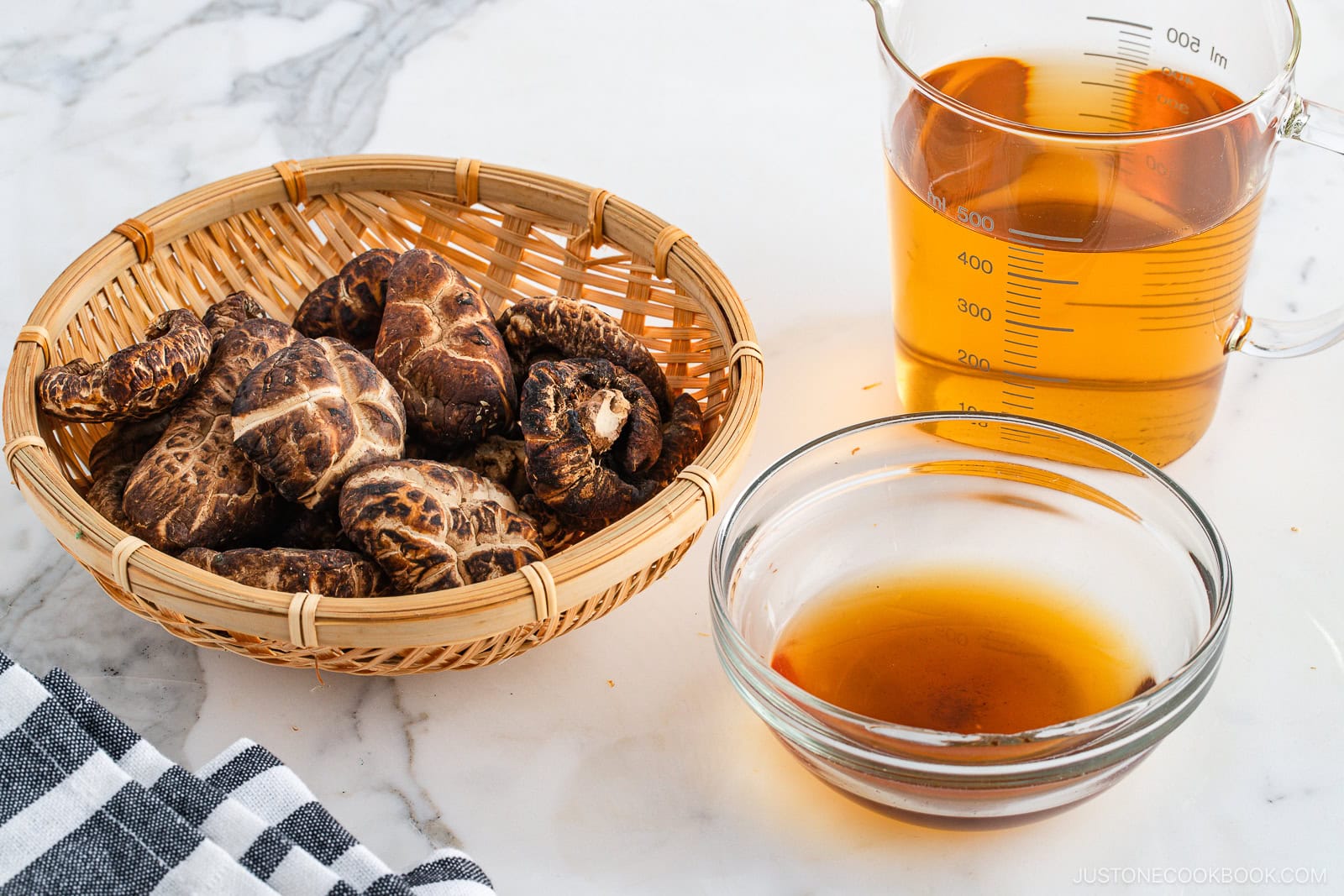
- byproduct of rehydrating dried shiitake mushrooms
- vegetarian/vegan
- rarely used on its own; usually combined with kombu stock or katsuo stock
Use it in:
- Chawanmushi
- Noodle soup dishes: Nabeyaki Udon
- Simmered dishes: Chikuzenni
- Chinese-style dishes: Harumaki, Stir-fried dishes
6. Vegan Dashi (精進だし)
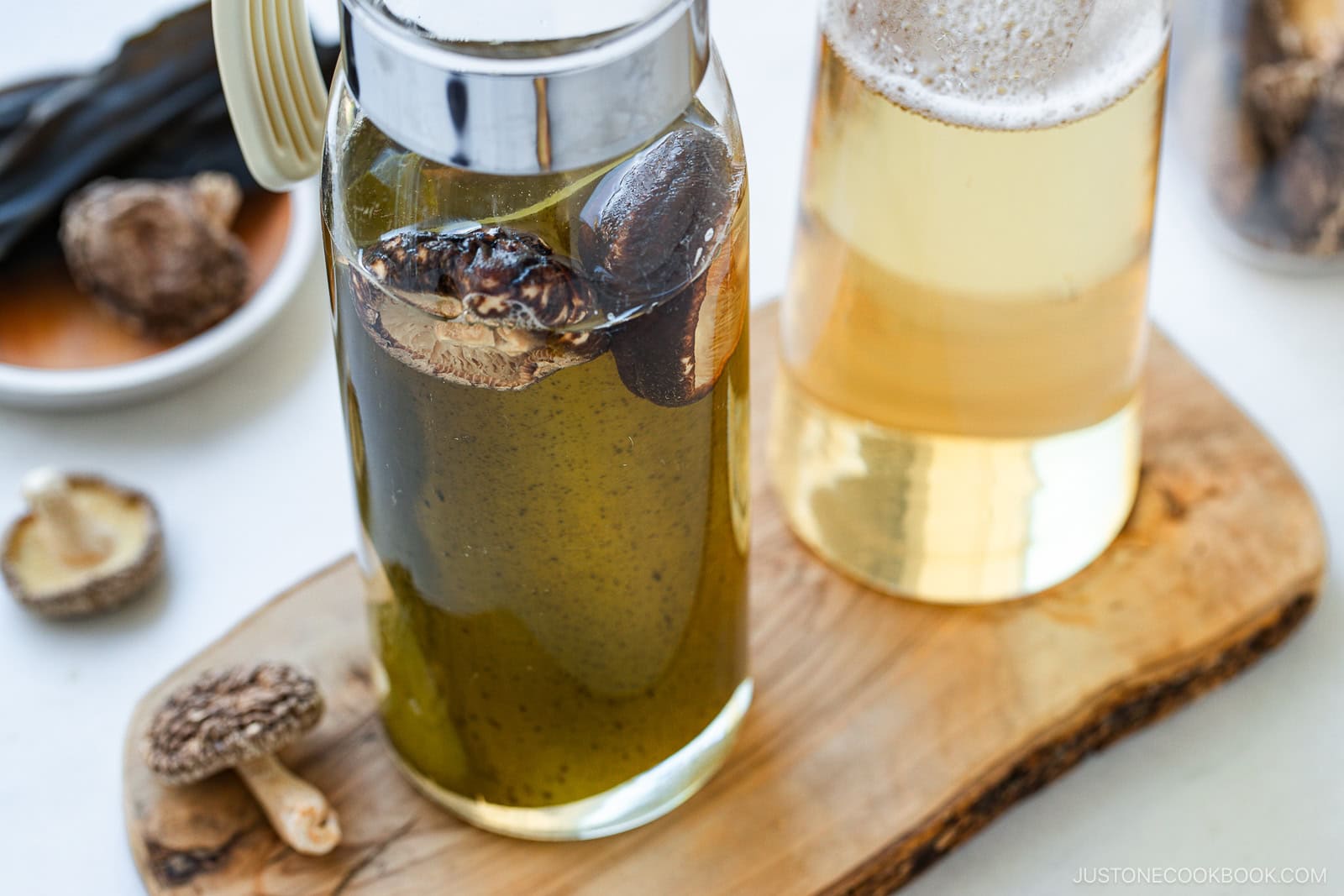
- uses dried kelp and the shiitake mushroom soaking liquid
- vegetarian/vegan
- more flavorful than kombu stock
Use it in:
- any recipe to make it friendly for vegans and vegetarians
Three Ways to Make Dashi
In just 5 to 20 minutes, you’ll have a stock to use in your favorite Japanese recipes.
Method 1: Dashi from Scratch
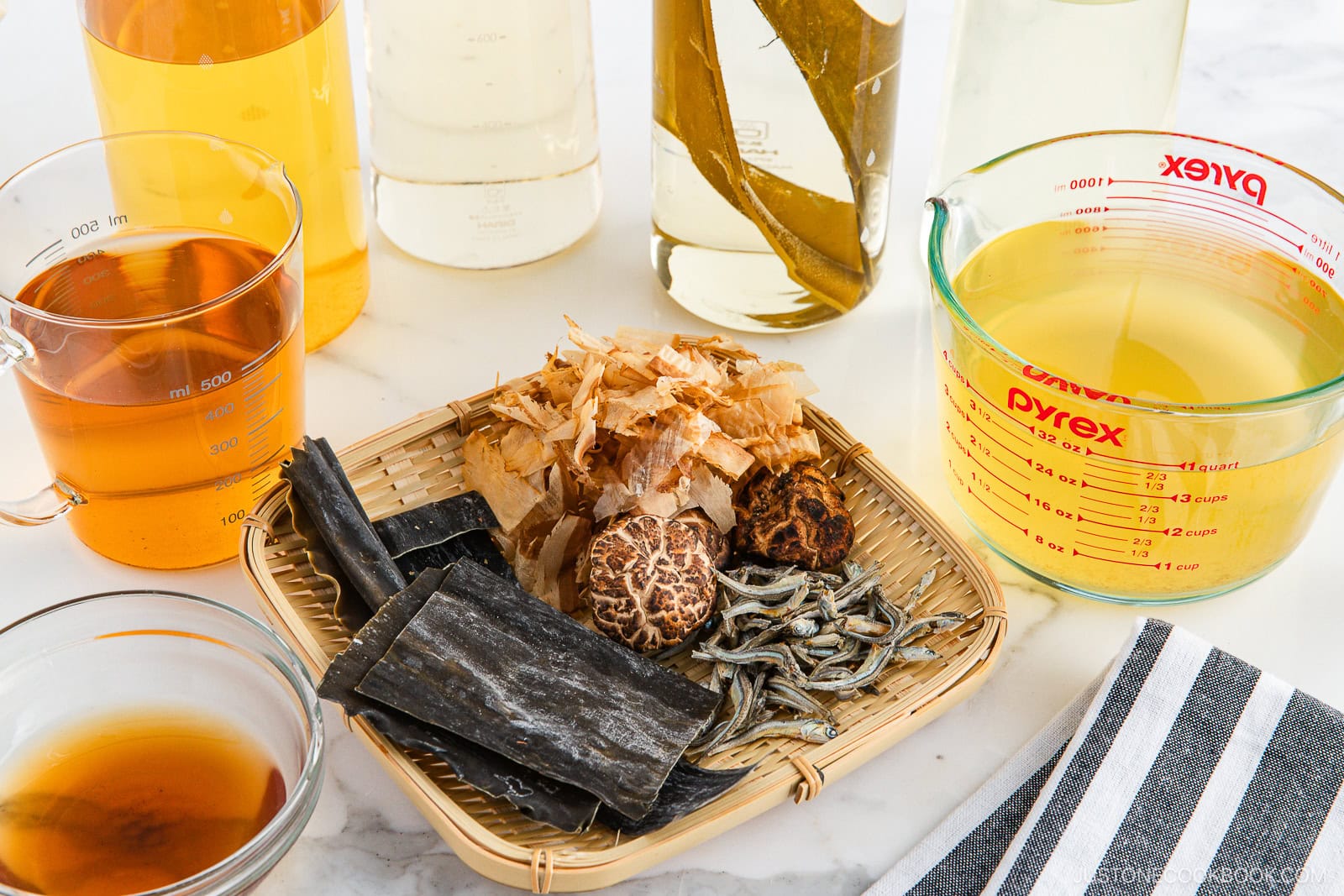
Cook time: 20 minutes
Pro: Best flavor
How to make: Add ingredient(s) to a pot of cold water and very slowly bring to a near boil. Steep and strain it. Use this method for:
Optional: Make it cold brew instead (most types)
Method 2: Dashi Packet
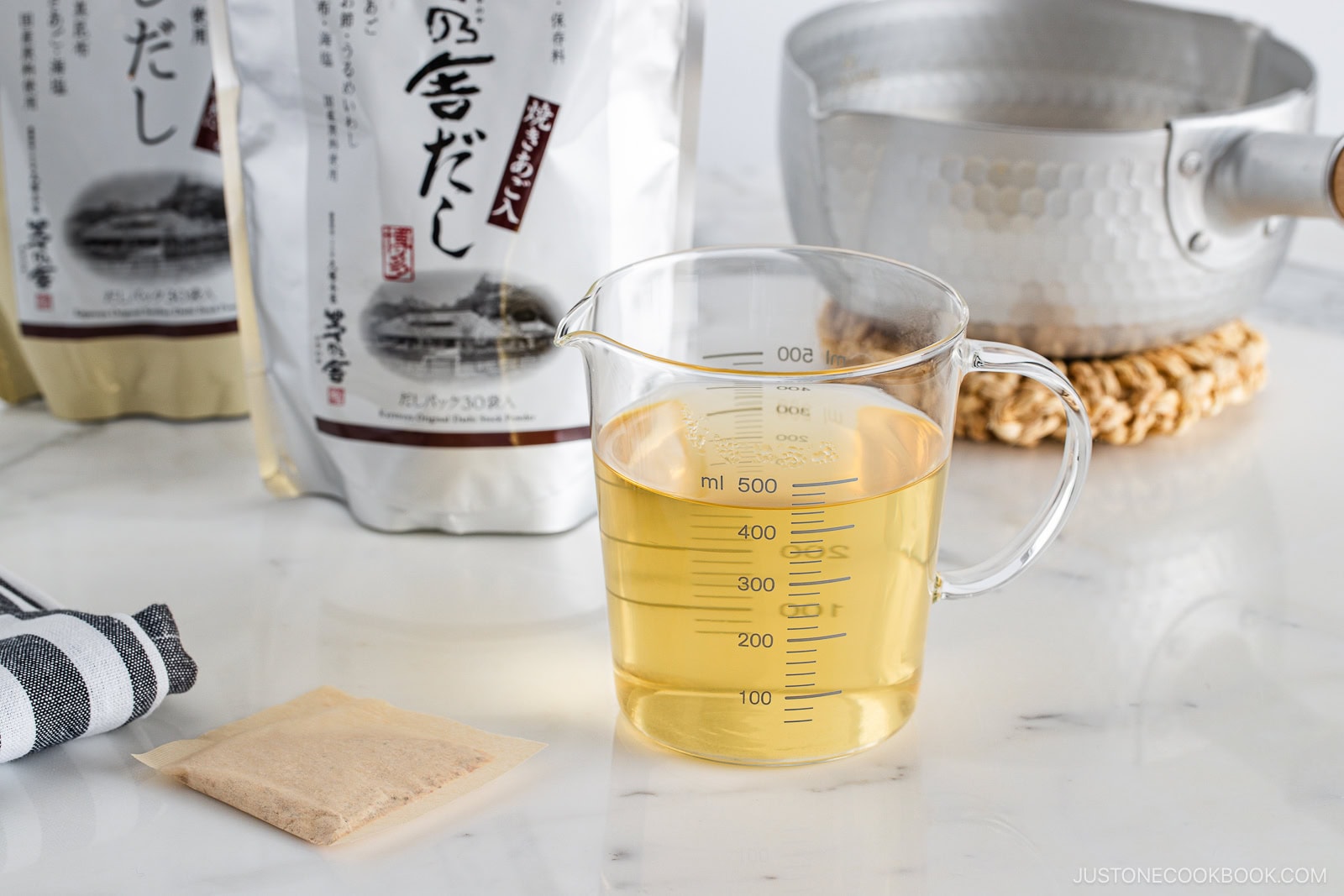
Cook time: 5 minutes
Pros: Very good flavor; convenient
How to make: Add to a pot of cold water and bring to a boil. Reduce the heat and simmer for 2–3 minutes. Discard the packet. [See my recipe]
Where to buy: Local Japanese grocery stores; hard to find at other Asian grocery stores.
My recommended brands: Kayanoya Dashi Packet (preservative-free, a bit pricey; find it on Amazon); or Yamaki Dashi Packet in Japanese grocery stores; or Yamasan Chaganju on Amazon.
Method 3: Dashi Powder
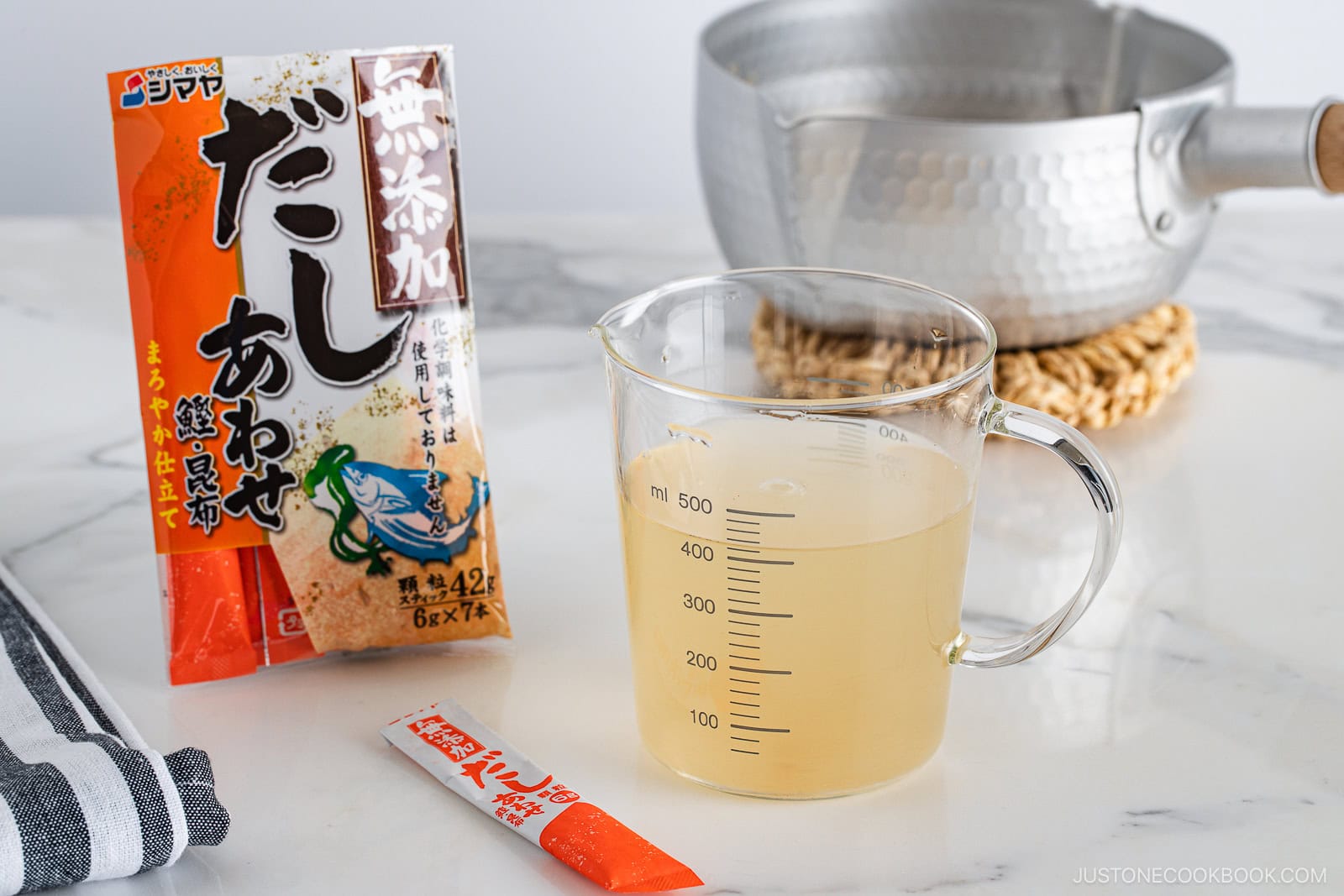
Cook time: 3 minutes
Pro: Fastest method (instant). Con: Least flavor; use only in a pinch
How to make: Dissolve the dashi granules into water and heat to a boil. [See my recipe]
Where to buy: Hondashi (ほんだし) and Dashinomoto (だしの素) are the most common brands. Find in Asian or American grocery stores.
My recommended brands: Shimaya awase dashi powder and Shimaya kombu dashi powder on Amazon and at Japanese grocery stores
Watch How to Make Dashi
Storage and Reheating Tips
To store: Transfer leftover stock to an airtight container and store it in the fridge for 3–4 days or freezer for up to 3 months.
To reheat: Simmer in a small pot over medium heat until warm, or microwave in 30-second intervals until fully reheated.
Frequently Asked Questions
There’s no good substitute. You can use chicken stock or broth, seafood broth, or mushroom broth, but the flavor will not be the same.
Editor’s Note: This post was originally published on January 4, 2011. It was updated with new images, video, and content in May 2019, when we opened this post’s comment section to the public. The post was republished with more helpful information on July 5, 2025.


